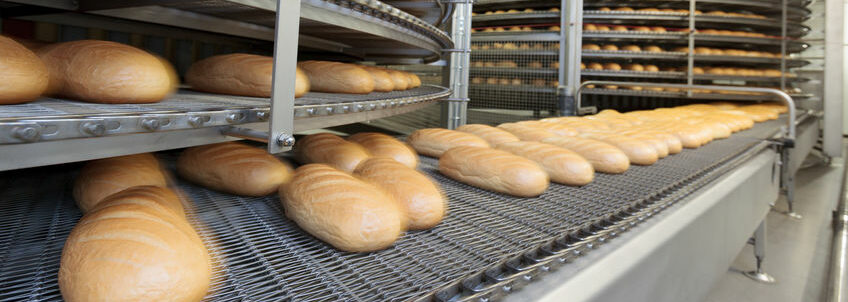Boosting Sustainability and Profitability Through Airflow and Energy Balance

Bakers spend countless hours perfecting formulations, calibrating ovens, and streamlining production lines. But how often do we think about the air moving through our facilities? While it might not be as glamorous as a golden-brown croissant, the invisible systems driving airflow and energy balance are pivotal to sustainability and profitability in modern bakery plants.
Join us as we slice into the science of airflow balance, uncover the nuances behind positive and negative air pockets, and explain why dialing in your plant’s air turnover and filtration systems is more than just hot air.
Ready to optimize airflow and cut operational costs?
The Basics of Airflow Balance
Airflow balance refers to the controlled air distribution throughout a bakery plant to maintain consistent pressure relationships between different areas. In technical terms, it’s the measured and intentional adjustment of supply and exhaust airflow rates to achieve the designed environmental conditions.
A well-balanced system ensures that each zone, from proofing rooms to packaging lines, operates at the correct temperature, humidity, and pressure for product integrity and food safety. Without it, bakeries risk compromising product quality, increasing energy usage, and even violating regulatory standards.
Differentiating Positive and Negative Air Pockets
Positive and negative air pockets occur when certain areas of a facility have higher or lower air pressure relative to adjacent zones.
- Positive air pockets push air out of a space when doors open, which is ideal for clean zones like packaging areas where you want to prevent contaminants from entering.
- Negative air pockets draw air inward, suitable for spaces like ingredient-receiving areas where dust control is critical.
Mismanaged pockets can create unpredictable crossflows, leading to temperature swings, airborne contamination, and higher energy consumption as HVAC systems overcompensate.
Why a Well-Balanced Airflow Matters in Bakeries
Bakery plants are uniquely sensitive to air conditions. Excess humidity in proofing rooms, temperature fluctuations in cooling areas, or airborne flour particles in packing lines can all sabotage product consistency and employee safety.
A precise airflow balance improves:
- Product quality by maintaining proofing and cooling specifications
- Food safety through controlled pressurization and contaminant isolation
- Energy efficiency by reducing unnecessary HVAC cycling and loss through unsealed areas
- Regulatory compliance with OSHA and FDA air quality and environmental standards
Key Reasons to Prioritize Airflow Optimization
- Air Turnover and Filtration: Frequent air turnover with appropriately rated HEPA or MERV filters reduces airborne flour dust and microbial load. B’s eBook outlines best practices for turnover rates in high-risk zones like cooling tunnels and slicing areas.
- Ductwork and Air Intake Design: Poorly designed ductwork creates pressure drops and air stagnation points. Modernizing intake placement and adding directional diffusers ensures uniform airflow distribution, reducing hot spots and product inconsistencies.
- Cold Room Cleaning Optimization: Cold rooms accumulate moisture and organic debris, which can disrupt air balance. A cleaning schedule integrated with airflow monitoring ensures minimal disruption and energy-efficient recovery times post-cleaning.
- Building Management System (BMS) Integration: An intelligent BMS monitors real-time pressure differentials, temperature, and humidity, adjusting dampers and fan speeds proactively. B’s eBook details case studies on integrating BMS with existing bakery systems to reduce energy consumption by up to 25%.
Improve your Airflow Today!
The proof is in the airflow! Thoughtful, data-driven airflow balance is a strategic advantage that protects product quality, reduces operational costs, and improves plant sustainability. If you want more actionable tips on improving your bakery’s airflow, we’ve got the perfect resource!
The Improve Bakery Plant Sustainability and Profitability through Airflow and Energy Balance BAKERpaper offers detailed guidelines, diagrams, and case studies to help bakers design and maintain efficient, compliant, and profitable airflow systems. Start engineering the perfect environment for your dough to rise and your profits to follow.
Download the paper today!
Want to stay up-to-date with BAKERpedia? Sign up for our newsletter today!

